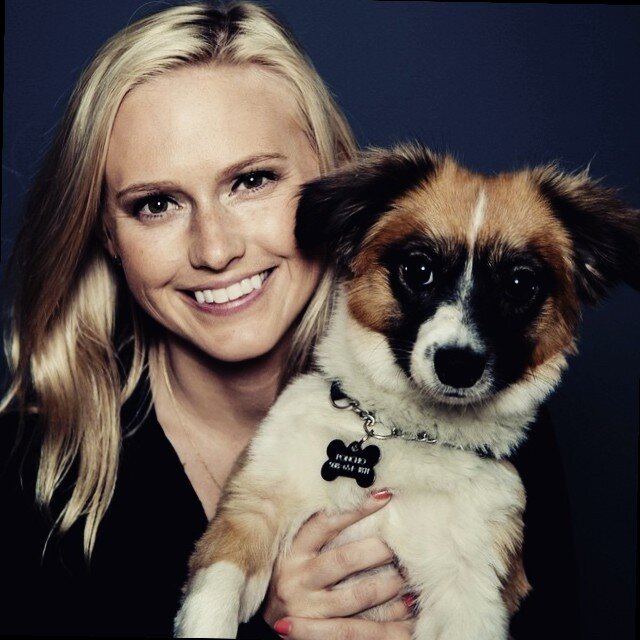A comprehensive (and ever-growing) list of user research tools

Everyone in the UX field (and tech/product, in general) seems to really love tools. We all want tools to make our lives, and jobs, easier. We strive to find tools to solve the most common problems we face. There is a good amount of information out there on different tools, but I haven’t come across a comprehensive list dedicated to user researchers (other people in the UX/product field can also benefit)!
As researchers, we have a lot of different components to our job that we then have to bring together into a presentable and actionable insight we can present to our teams. With this, they can go out and make products better.
I have broken up the different resources into different areas/responsibilities of user researchers. A lot of these tools may overlap and make sense in different areas, but I wanted to try to separate them as best as I could. I will highlight some of my favorites and will link to everything I can. As time goes on, I hope this list only grows. Please comment with your favorite tools or recommendations!
User Research Tools
Slack Channels:
I wanted to start off with different slack channels I have found extremely helpful as a user researcher. These channels span across the world and offer information on jobs, resources, different discussions on research methodologies and more
- Mixed Methods
- Research Ops
- HexagonUX (all women)
UX Artifact Templates:
Honestly, Pinterest (follow my user research board) is a great way to find templates of UX artifacts, which can help non-designers get a little more creative when pulling together research. I have highlighted some of my favorite tools, and also some I have created myself. All of these are templates. You don’t have to follow them exactly, but they may give you ideas on how to visualize the research you have done.
- XMind (for mind mapping)
- Mini Heuristic Evaluation
- Empathy Map Template
- Persona Template (from UX Lady)
- Customer Journey Template 1
- Customer Journey Template 2 (scroll down — includes a Service Blueprint, too)
- Scenario Storyboard Template
Competitive analysis:
Competitive analysis may not be in every user researcher’s job description, but it is a good idea for you to properly understand the competition in the space. I have created both of these templates. The first is a much more high-level understanding of competitors, while the second dives much deeper into the details.
- SWOT Analysis Template
- Competitive Audit Template
Research Platforms/Databases:
Below are some options I have used before for platforms to recruit, conduct and organize research. Some tools have different abilities than others, but they are all fairly robust. One of my favorite tools for conducting remote card sorting or IA sessions is Optimal Workshop. They do a really great job with set up and post-research analysis. I also think Usabilla is a great tool for getting users to engage with quick surveys or research opt-ins.
- Optimal Workshop (including Optimal sort, Treejack and First Click Testing)
- Usabilla
- Uservoice
- Userzoom
- Validately
- Airtable
- Nom Nom
- dscout
Research Artifact Templates:
I have created a few templates to showcase what, in general, goes into a research plan and research report.
- Research Plan Template
- Usability Testing Plan Template
- Research Report Template
- UX Research Portfolio
- Usability Testing Metrics Spreadsheet
Recruiting:
I know I have already mentioned a few platforms above that are able to help you recruit participants, but I wanted to make a separate list for those I have used almost solely for the purpose of recruiting. If you are looking to recruit in the US, UserTesting is definitely a favorite and, for Europe, I would pick TestingTime.
- TestingTime
- UserTesting
- Ethnio
- Userzoom
Prototyping:
We may not need to make wireframes and design UX/UI, but we still need to work with designers on both of the above. My absolute favorite tools either for working with designers, or for when I need to create my own designs, are Sketch & Invision. The combination is wonderful and fairly fluid. This makes testing prototypes during usability tests easier. I also want to give a shoutout to Pop (by Marvel) for bringing paper prototypes to life, definitely worth a try!
- Sketch
- Invision
- Balsamiq
- Zeplin
- Proto.io
- Pop Paper Prototyping
- Framer (Sketch competitor)
Synthesis & Sharing:
Synthesizing and sharing results can be really difficult, both in-person and when your team is remote. Some of the above solutions in the research platform list (ex: Airtable) help with this. Below are separate tools I have found to help run synthesis sessions and share research results. My absolute favorite tool on this list is Mural.co, they have allowed me to easily hold remote synthesis sessions with teams across the world. My other favorite, for sharing, is Mosaiq, a customizable wordpress site. I have also showcased an example of a usability testing spreadsheet where I use the stop-light method.
- Post-its for affinity diagrams (because what research article would be complete without them)
- Mural.co (for remote synthesis)
- Aurelius
- Mosaiq
- Usability Testing Spreadsheet
- Notion
Notetaking & Transcription:
I haven’t come across many notetaking apps that are more effective than using excel, word, or getting your research sessions transcribed. The one that also offers analysis of your notes in Reframer. I used it briefly, but I am too in love with my way of taking notes on excel to move to a different tool. I have used very small transcription services in the past, but I have heard good reviews from these companies.
- Reframer (notetaking by Optimal Workshop)
- GoTranscript (transcription by humans)
- Temi (AI transcription)
Surveys:
There are many platforms that allow you to set up surveys, all with different capabilities. One of my favorites is Qualtrics, as it allows for some really nice question logic, and has some great analytics tools. If your budget isn’t there for surveying tools, something as simple as SurveyMonkey, GoogleForms or a Microsoft Word document can also be effective.
- Qualtrics
- QuestionPro
- LimeSurvey
- Typeform
- Sample Screener Survey Template (Microsoft Word)
Analysis (of Behavior):
Having a platform or tool that helps analyze user’s behavior on your app or website can be extremely helpful when pulling examples for research insights. If you don’t mind being creepy, FullStory or Hotjar are great tools that record sessions of users on your product, and allows you to watch them either live or later on. I have also found HotJar to be useful when trying to justify information hierarchy via heatmaps.
- Hotjar
- Optimizely
- FullStory
- Bugsee (mobile)
- Appsee (mobile)
Remote usability testing/interviewing:
Earlier I mentioned some robust research platforms and recruiting tools, that also allow you to conduct interviews on the platforms, but I wanted to highlight a few tools in particular that are useful for remote usability testing or interviewing. My absolute favorite screensharing and video conference is Zoom, as it has many capabilities and is extremely reliable.
- Lookback
- Zoom
- Google Hangouts
- Userzoom
- UserTesting.com
Surveys
There are many usability surveys floating around out in the space of the internet. I have a folder that includes some of the top surveys, such as the SUS, QUIS and USE.
All of these recommendations and opinions are 100% mine, no sponsorship here, I’m not that cool or popular. I will continue to add to this list as I explore other tools and also as I hear from you about what your favorite tools are. Please drop a line to help this list grow and expand into a resource for all to use!
[embed]https://upscri.be/ux[/embed]
